PRESTO PLANS
Sent straight to your inbox
CLICK HERE TO ACCESS
Sign up to receive 10 ready-to-use ELA resources your students will love!
10 FREE ELA RESOURCES
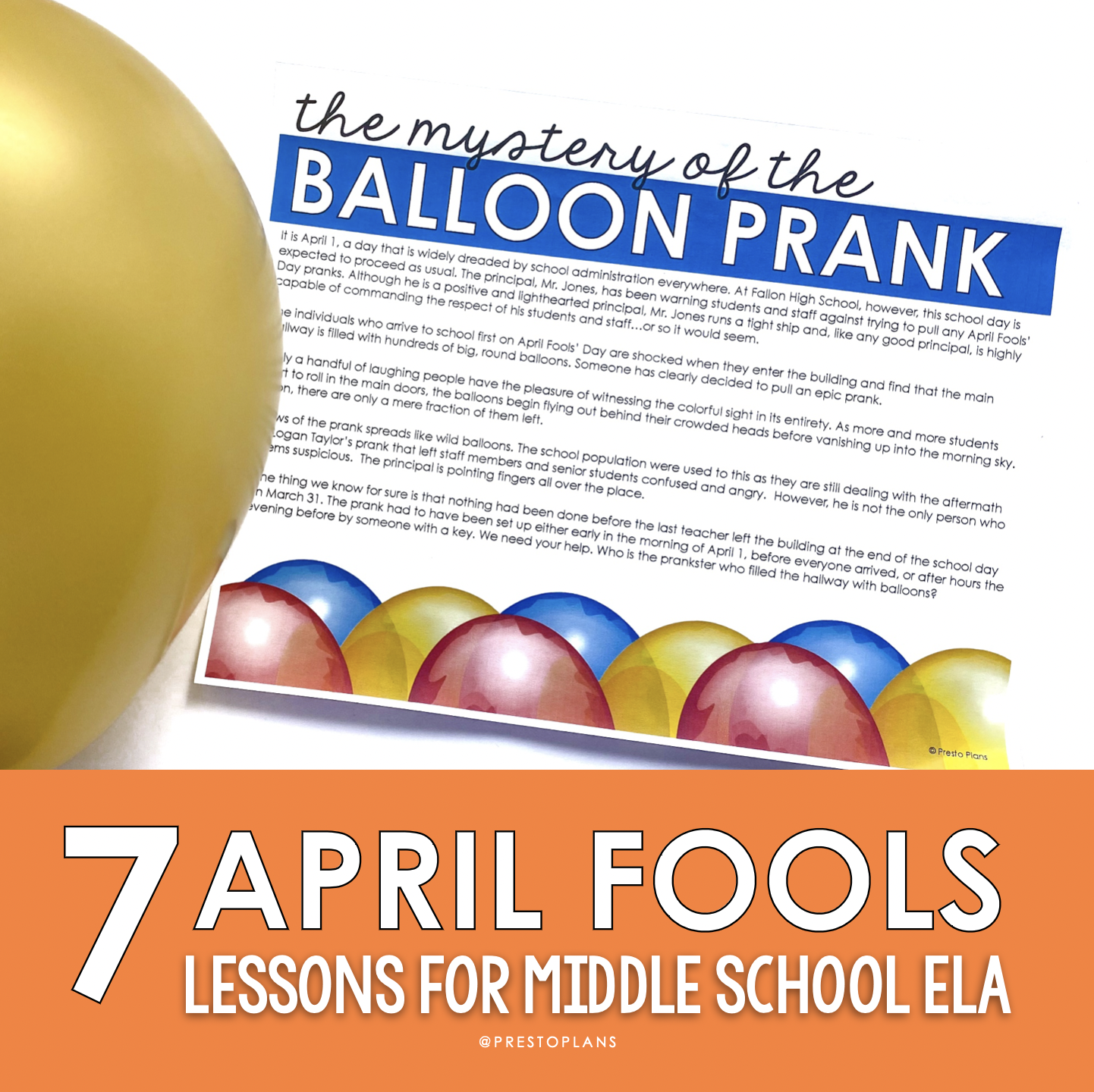
7 April Fools’ Day Lessons for Middle School ELA
I have to admit that April Fools’ Day is one of my guilty pleasures. I love to play funny, lighthearted pranks on my family (my husband still talks about the year that I changed his Facebook language settings to “pirate” – arrr matey!). There are plenty of ways to incorporate April Fools’ Day ELA activities in middle school, too!
April 1st is customarily a time for practical jokes and hoaxes, with the tradition dating back hundreds of years. Whether you’re a prankster like me, or you prefer a subtler way of infusing jokes, tricks, and gags into your lessons, here are my favorite ideas and activities for getting into the April Fools’ Day spirit in your middle and high school English classroom.
1. Prank Reading Mysteries
A reading mystery activity is a great way to ‘trick’ your middle school ELA students into practicing essential literacy skills. These include close reading, making inferences, and using evidence from the text to support their thinking.
The mystery of the balloon prank is a fun, accessible way to bring the spirit of April Fools’ Day into your middle school English class, as the accompanying story features students going against the principal’s orders and pulling off a massive April Fools’ Day prank at their school! Students have to comb through clues, including a static electricity lab instructions sheet, a student suspension notice, a weekly school memo, and a balloon artist poster to determine who filled the hallways with balloons.
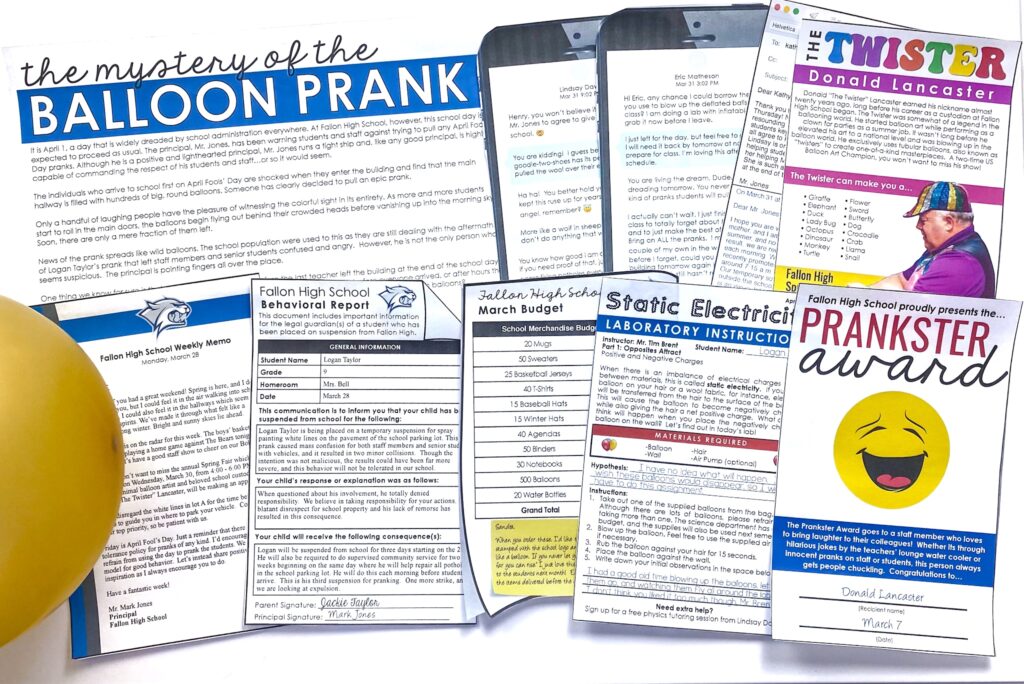
Another fitting reading mystery to try is the mystery of the tape prank. In this engaging and interactive ELA lesson, your students will be introduced to the story of poor Mr. Gourley, a physical education teacher who is shocked to find himself duct taped to the wall!
With this one, students will closely examine a variety of evidence, including speeches and social media posts. This will help them identify (or rule out) the potential list of duct tape-wielding suspects. Your students will record and share their theories, supporting their predictions with detailed evidence and examples from their readings.
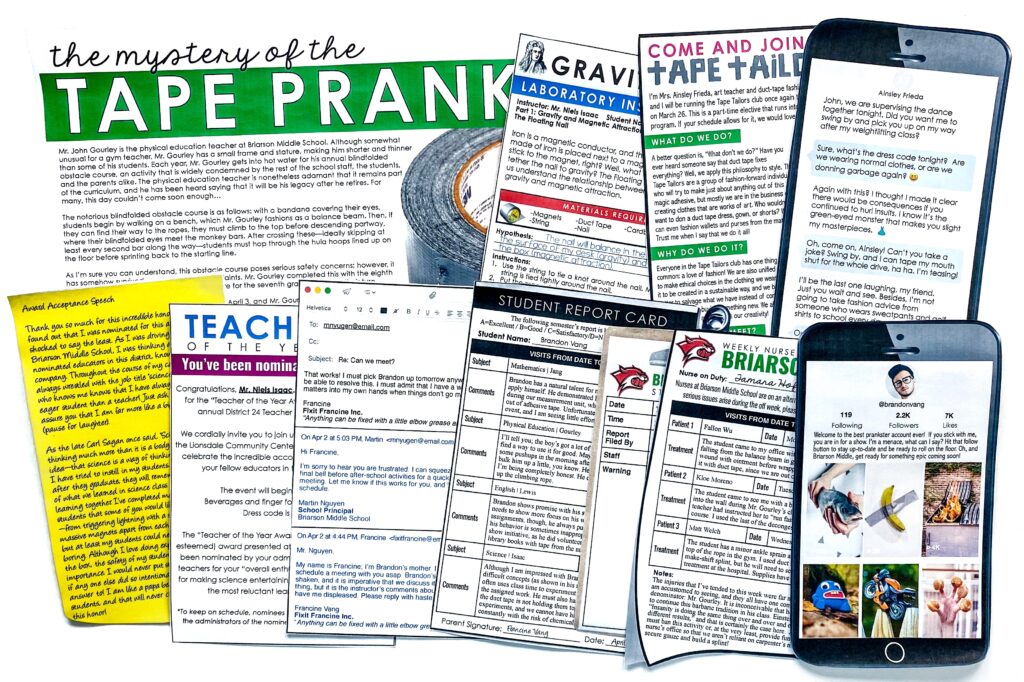
2. Credible sources
April Fools’ Day also presents an opportunity to help middle school ELA students determine the credibility of sources. I like to begin a lesson on credible sources with the classic BBC prank video about the annual “spaghetti harvest,” in which farmers grow spaghetti on trees!
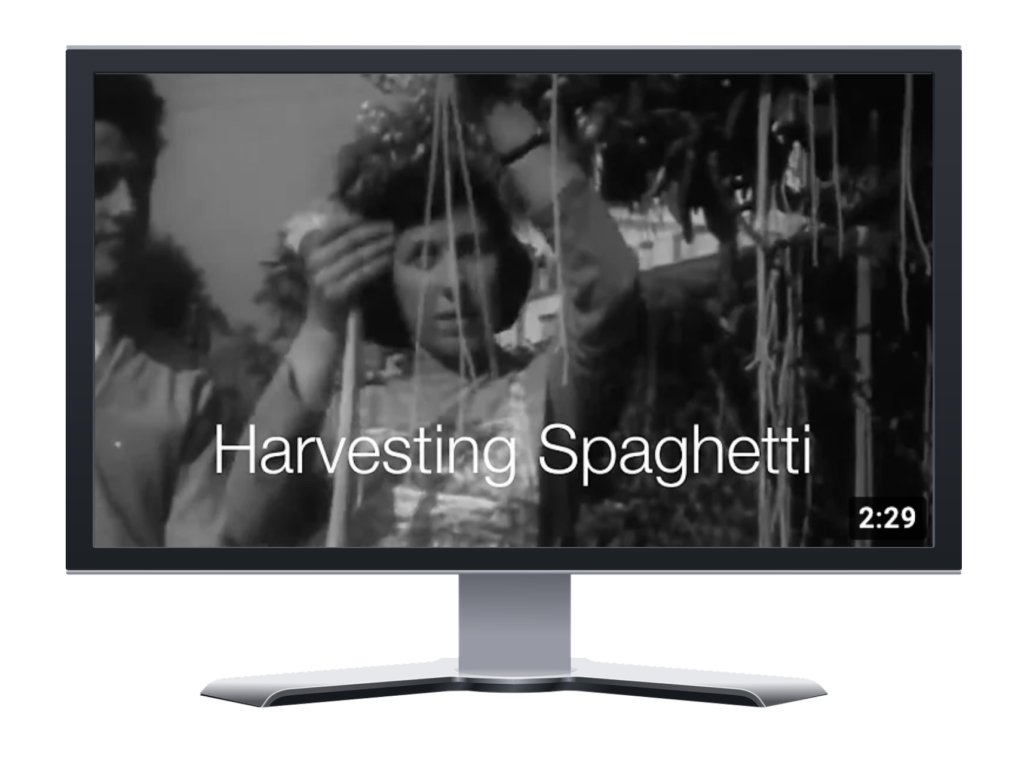
Next, I like to discuss what makes a source credible. In the age of information, students need to evaluate what makes a source trustworthy. They also must understand the steps they can take to avoid bias and confirm a source’s reliability. At the end of the lesson, you can provide your middle schoolers with a ‘credibility checklist’ of criteria they can look for during their next research project.
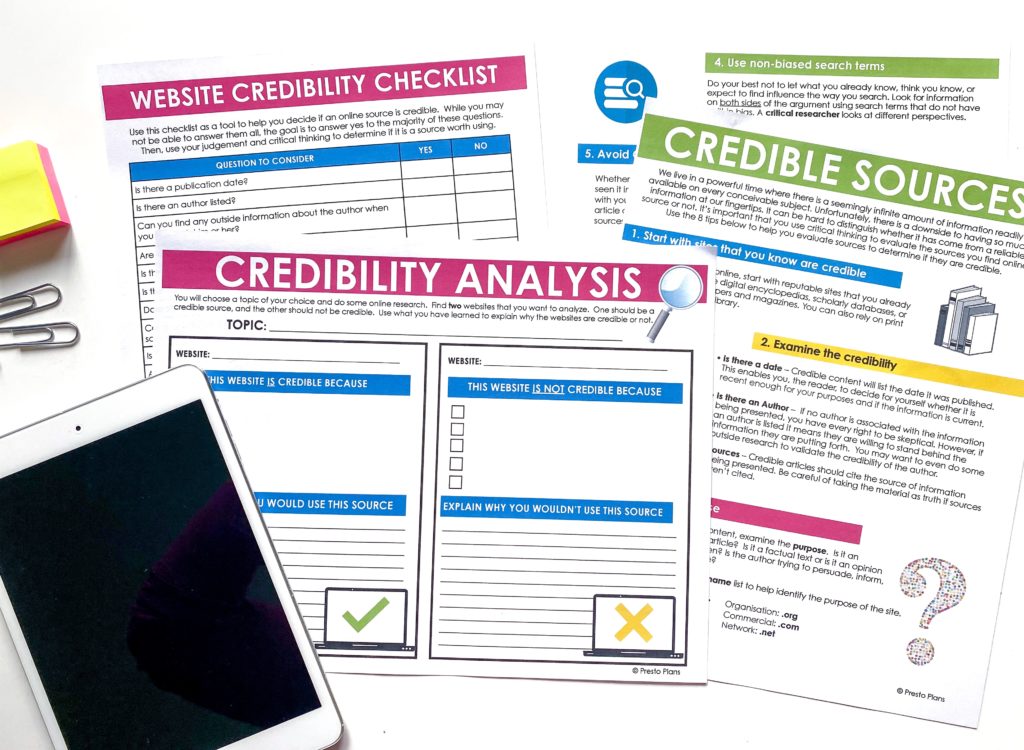
3. Idiomatic Expressions
Idioms, or phrases where the meaning is not immediately clear from the individual words that are used (for example, “raining cats and dogs”) are a tricky skill for middle school ELA students to get to grips with. This is especially true for those students who are learning English as a second language.
Why not add an April Fools’ Day twist to your lesson by incorporating various idioms that use the word ‘fool?’
For example, your students might like to explore phrases like these:
- Fool’s gold
- Fool’s errand
- Act the fool
- You could have fooled me
- I’m nobody’s fool
- A fool and his money are soon parted
- Fool me once, shame on you, fool me twice shame on me
- Fools rush in
- Make a fool of
- You could have fooled me
One way to engage with these phrases is to organize students in groups. Each group could research what a particular idiom means and create a poster for a vocabulary word wall! Alternatively, you might prefer to make this idea into an April Fool’s Day ELA activity. For example, try out a matching game in which students have to pair up the idiom with its definition. Extend the activity by asking your middle school class to use an idiom in an April Fools’ Day story!
4. History of April Fools’ Day
Another way to embrace the spirit of April Fools’ Day in the ELA classroom is to learn more about the history of the day. I like to begin this activity by pranking students with a ‘joke’ quiz. As students go through the difficult multiple-choice questions (for which there are no correct answers), they will realize that this is not a real quiz but simply an elaborate practical joke.
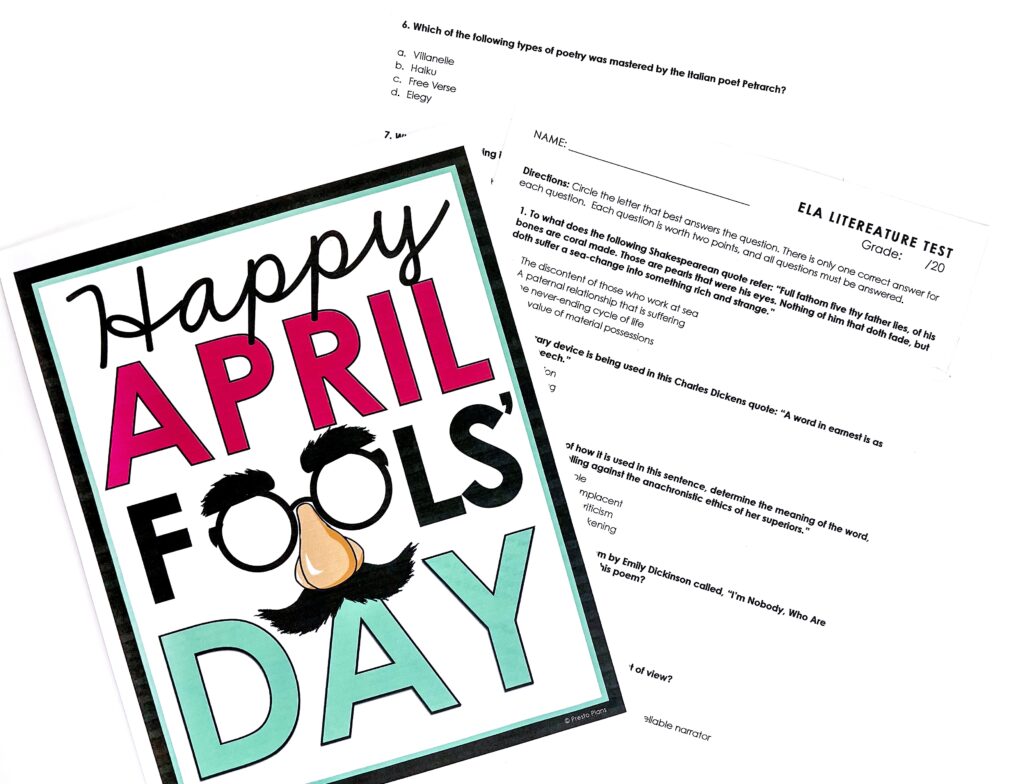
Then, I like to get students to read a nonfiction article about the history of April Fools’ Day. You can choose to do this with your entire class together, or students can break out into groups. Working collaboratively, students will answer comprehension questions about the reading, remembering to support their thinking with evidence from the text.
Finally, if time permits (and you are feeling brave), you can facilitate a discussion about fun, playful pranks to really get into the spirit of the day! Before diving into these, however, I always give my best tips for what makes for a good prank. One tip that I like to emphasize here is the importance of keeping the pranks good-natured and lighthearted. I remind students not to make pranks that are meant to embarrass others or that are mean-spirited at all.
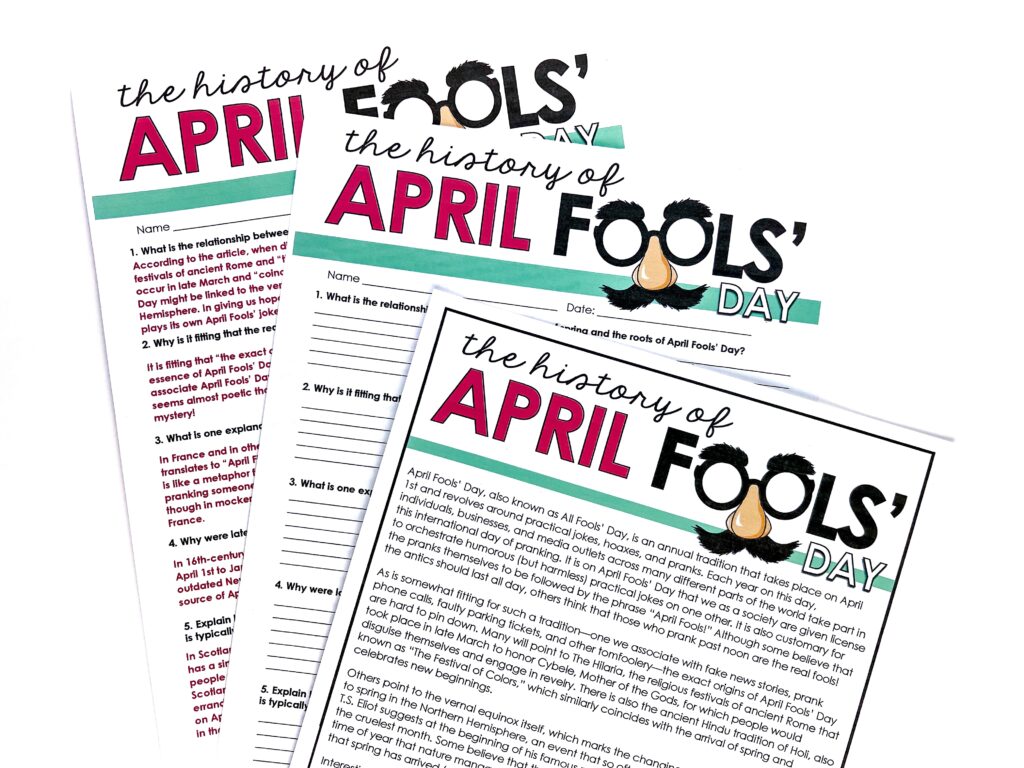
5. Epic Pranks in History
What better way to lean into the April Fools’ Day spirit than by sharing stories about hoaxes and pranks played on people throughout history? For this activity, students read through a variety of nonfiction articles about some of the most epic pranks in history, such as The Gravity Hoax, where a broadcaster on BBC Radio convinced an audience that an astronomical event would make people experience a loss of gravity at a certain time of the day.
After reading each nonfiction article about an epic prank in history (which also includes the classic Spaghetti trees and instant color TVs pranks), students will complete the corresponding comprehension questions. These questions are meant to challenge students to dive deeper into the texts and demonstrate understanding. Once they have finished these questions, I get students to take turns sharing what they have learned in small groups.
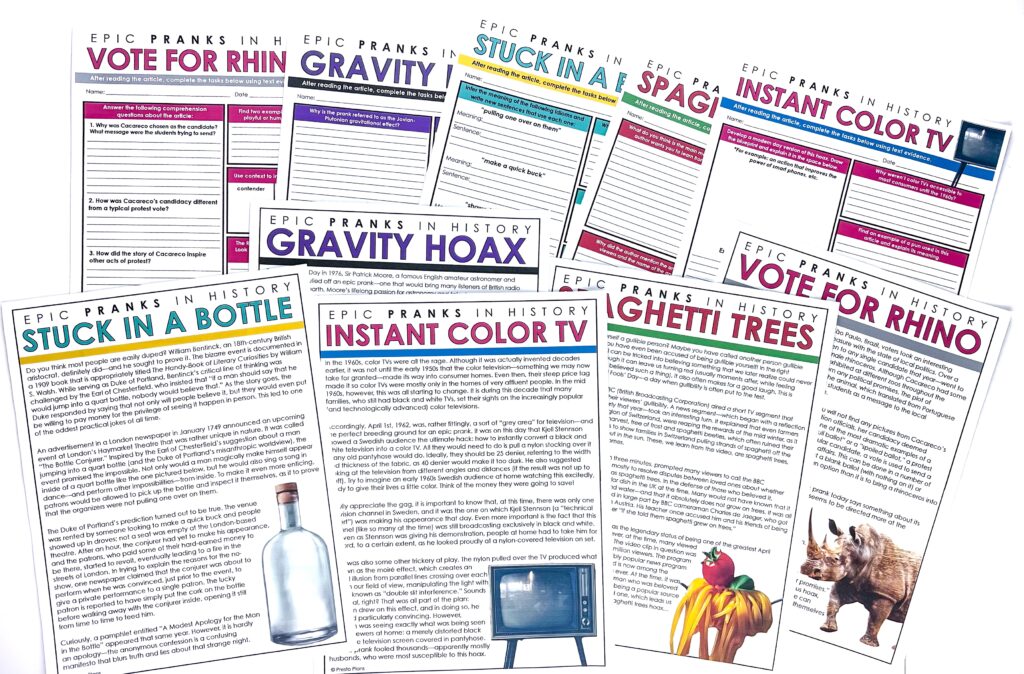
6. Two Truths and a Lie
April Fools’ Day also presents a natural time to foster team building and community in the middle school classroom. As an opening icebreaker, or at the end of the day, you could lead your students in a quick game of Two Truths and a Lie. In this game, students convincingly make three statements about themselves – two that are true, and one a “lie.” Then, their peers need to determine which of the statements is not true.
You could extend the game into an April Fools’ Day ELA activity involving research. For example, present your students with a list of “facts” and have them carry out research to determine which ones are true and false. Alternatively, students could use their persuasive writing or speaking skills to try to convince their classmates that a certain “fact” is true.
7. April Fools’ Day Short Stories
April Fools’ Day is a great time to incorporate a text that involves pranks, gags, or tricks. Two of my favorite short stories for April Fools’ Day are The Open Window by Saki and The Hitchhiker by Roald Dahl.
THE OPEN WINDOW:
The Open Window is not only a short and cleverly-written tale, but it is also fitting for April Fools’ Day. In the story, a teenage girl plays a prank on a nervous and unsuspecting visitor. Because there is some challenging diction in Saki’s story, I usually start this off with some pre-reading vocabulary work that has students use context clues to predict the definitions of various vocabulary words used in the text. This way, when students get to those challenging vocabulary words in the text, they are not confused!
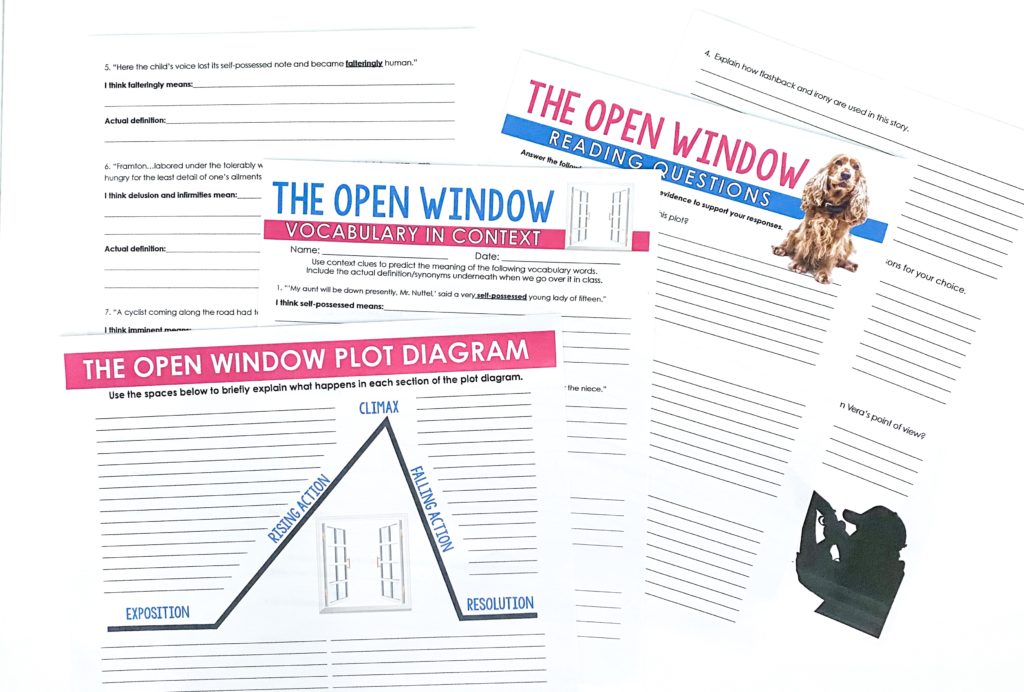
THE HITCHHIKER:
In The Hitchhiker, a man picks up a hitchhiker while driving to London. He soon learns that his new passenger is much “trickier” than he initially appears. The story provides the perfect opportunity to engage with figurative language, historical slang terms, and dialogue. As with The Open Window, this story has a certain “pranking” spirit that will resonate particularly well around April Fools’ Day!
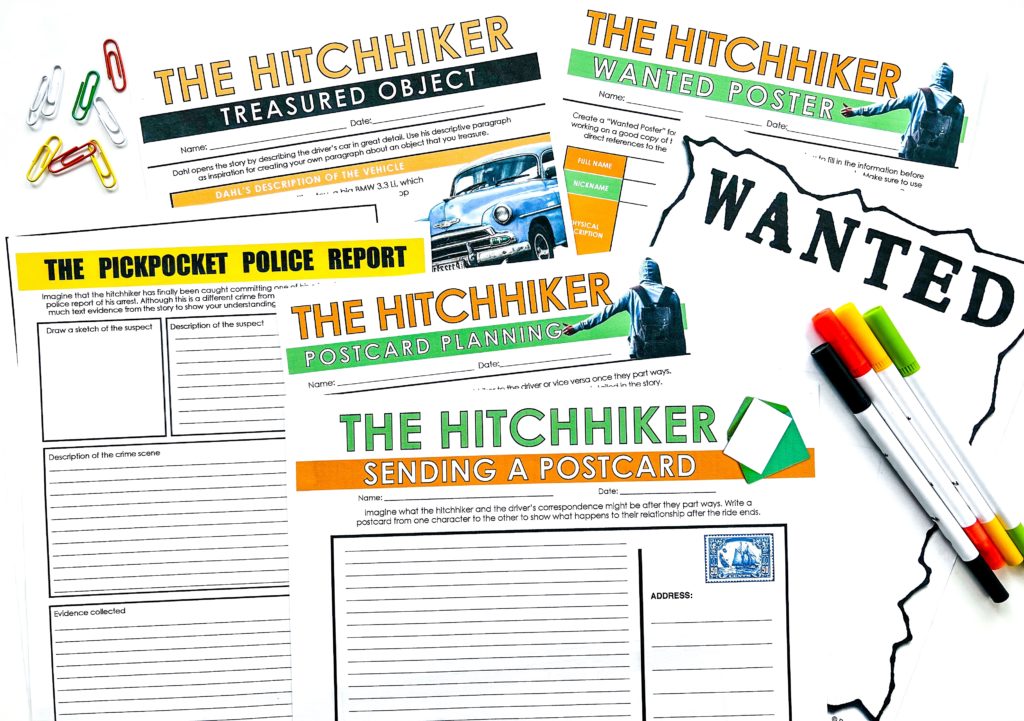
No matter which story you choose, both offer an outside-the-box way to embrace April Fool’s Day while continuing to support your students as they develop essential ELA skills.
That’s it! I hope this list inspires you to create an engaging April Fools’ Day lesson for your middle school students (and that you have time to engage in a fun prank or two, if you like)!
Looking for more tips and resources for reading instruction? Click here.








Search the blog for what you are teaching
GIVEAWAYS
sent straight to your inbox!
share this post